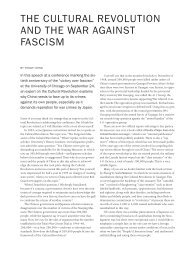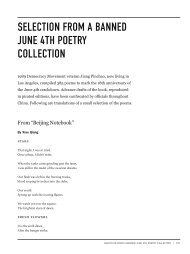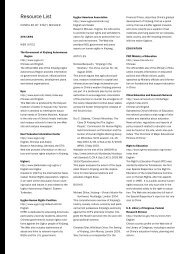STATE SECRETS: CHINA'S LEGAL LABYRINTH - HRIC
STATE SECRETS: CHINA'S LEGAL LABYRINTH - HRIC
STATE SECRETS: CHINA'S LEGAL LABYRINTH - HRIC
Create successful ePaper yourself
Turn your PDF publications into a flip-book with our unique Google optimized e-Paper software.
Cover-ups<br />
34 HUMAN RIGHTS IN CHINA <strong>STATE</strong> <strong>SECRETS</strong>: CHINA’S <strong>LEGAL</strong> <strong>LABYRINTH</strong><br />
The numerous incidences of enforced media silences and cover-ups that have been<br />
documented 118 have a direct, fundamental impact on the lives of people in China,<br />
and increasingly, globally. 119 Some—including disease outbreaks, environmental<br />
accidents and industrial accidents—are tied explicitly to state secrets. Others may<br />
not have been directly driven by specific state secrets regulations, but all are representative<br />
of government information control, of which state secrets plays an integral<br />
part.<br />
To maintain control over the media, specific regulations on state secrets in the<br />
work of the media have been passed, such as the 1992 Regulation on the Protection<br />
of State Secrets in News Publishing. 120 However, recent regulations released in 2006<br />
governing foreign media, including regulations created specifically for the 2008<br />
Olympics, seemingly contradict both each other and the earlier regulations. In<br />
order to address growing international pressure in the lead-up to the Olympic<br />
Games, the 2006 regulations purportedly relax requirements for journalists working<br />
in China. 121 However, three problems remain: the media regulations still<br />
contain wording that is ambiguous; these regulations remain under the overall<br />
umbrella of the state secrets system, which is dedicated to information control; and<br />
despite reported attempts to relax controls through national regulations, local<br />
authorities still operate independently, as witnessed by continuing harassment of<br />
and violence directed at Chinese journalists investigating stories at local levels. 122<br />
Pollution accidents: The toxic spill in the Songhua River in November 2005 was<br />
only one of many cover-ups of pollution accidents, including cadmium pollution<br />
in the North and Xiang rivers, which prompted the central government to issue<br />
guidelines for the prompt reporting of such incidents in February 2006. 123 Ultimately,<br />
this new reporting structure and the declassification of death tolls from<br />
natural disasters are surgical moves. The NAPSS declined to define “natural disasters”<br />
and warned that only government agencies would be able to release (and collect)<br />
these statistics—signaling that it was not ready to release its hold on<br />
information. And how these guidelines will coordinate with the proposed new<br />
“Draft Law on Emergency Response” now working its way through a reviewing<br />
process remains unclear. But the limited sections of the draft that have been publicly<br />
released to date offer more restrictions on news reporting, not less. 124 The legislation<br />
is reportedly to be issued and made public in 2007. 125







